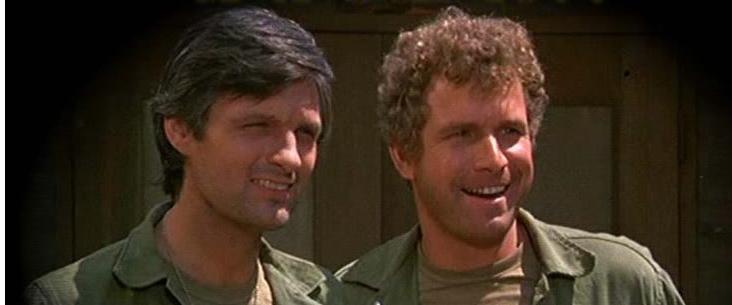Periodically, I have mentioned “Personal Brand” on this blog. It’s a controversial term, partly because the idea of having a personal brand brings with it the danger of putting your ego in front of anything else of value you do. Of course it doesn’t have to be that bad, but I understand the concern. The person I most associate with the debate over personal brand is Geoff Livingston, who has written largely disparagingly about it in the past, though I have found in disagreeing with him that our differences are largely semantic. It takes a su of individuals to make the social web go around, just as any company is the sum of its individual employees.
As I was reading through Geoff’s latest book, “Welcome to the Fifth Estate,” there was a mention of Personal Brand again, along with the dilemmas it brings for corporate social media programs. How can a company let an individual voice the corporate social media channels? Can a person with a peculiarly individual voice truly represent the brand? Will there be clashes of egos? What if that person leaves after becoming so identified with the brand?
 As I saw the mention go by, I suddenly thought of an “ism” I had long referred to when contemplating the passing of any torch. It, of course, is the “Trapper John/BJ” effect, referring to the characters from the television show M*A*S*H. The TV show, based on a popular movie, itself based on a notable novel, revolved around two central characters: Hawkeye Pierce and Trapper John McIntyre. Fans of the movie could hardly imagine the show continuing without one of these stalwarts, right?
As I saw the mention go by, I suddenly thought of an “ism” I had long referred to when contemplating the passing of any torch. It, of course, is the “Trapper John/BJ” effect, referring to the characters from the television show M*A*S*H. The TV show, based on a popular movie, itself based on a notable novel, revolved around two central characters: Hawkeye Pierce and Trapper John McIntyre. Fans of the movie could hardly imagine the show continuing without one of these stalwarts, right?
Well, actor Wayne Rogers, who played Trapper John, left after three seasons (the TV series ran for eleven years). Trapper’s replacement? B.J. Hunnicutt. While B.J. was hardly the same character, he filled the same role, brought his own traits to it, and the show continued seamlessly, continuing to thrive. Not only that, but other major characters were replaced as well: Col. Henry Blake left at the same time to be replaced by Col Potter, and M*A*S*H patsy Major Frank Burns eventually departed as well, in a similar manner to that in the film, to be replaced as a foil for Hawkeye and BJ by Major Charles Winchester.
thrive. Not only that, but other major characters were replaced as well: Col. Henry Blake left at the same time to be replaced by Col Potter, and M*A*S*H patsy Major Frank Burns eventually departed as well, in a similar manner to that in the film, to be replaced as a foil for Hawkeye and BJ by Major Charles Winchester.
Too many details (Hey, I was a big fan), but the point is: the entity remained whole, even with some very identifiable – and seeming irreplacable- individual parts changing.
As for social media in corporations, the worry that a standout personality will risk crippling social media efforts when that person leaves should not be a worry at all. A company just needs a succession plan, and then someone to be the successor.
Every company needs a B.J.

It’s also a matter of finding people (or in the case of Mash, actors) who put the work ahead of their own personal interests. Part of why the switch over in Mash worked was that, like you said, it was seamless. Sure it was different, but the actor wanted not only the role to work, but the show to go on.
The truth of the matter is if and when someone leaves a business and things fail one of two things have likely happened: 1) like you said, the brand didn’t have a plan b or worse yet 2) the person put more effort into themselves than the brand they were working for.
Sadly, there are people who work a lot harder on the role they play than the show itself.
Good perspective Doug. And certainly a dilemma faced many brands. I think that Michael hit the nail – it does come down to putting work ahead of personal interests. However, it can be difficult to transition a personality and maintain a loyal following. How the brand chooses to do that truly depends on having a strategy in place for that rainy day.
I liken this to college sports. Every season, you see some team explode on the scene with a great record because got some great recruiting class and these freshmen spend the next few years helping them turn around a decade of mediocrity. The college markets the hell out of these players and everything is right with the world. Well…that is, until the leave for the pros. What happens now? That’s when you find out if you’ve built a team based around the star quality of a few players or if you’ve built a program. Programs continue on, almost regardless of the “stars.” Look at a team like Duke or in the pros, the Steelers. Stars come and go, but the system remains the same and they plug in new players and go about winning games just like before. This isn’t to say that there’s no place for stars – things are obviously infinitely easier when you have them, but you have to prepare for their eventual exit and be ready to plug someone else in.
You Bring Up a Good Point, Doug. There’s a Delicate Balance You Have to Make When Developing a Social Media Program…This is Why I Believe in the Power of Having a Social Media Team.
+ It Helps Keep Everyone Accountable
+ It Pushes Everyone to The Next Level
+ It Creates a Back-Up System for the Program
+ It Helps Fuel New Ideas
+ It Helps Keep Things in Perspective
Ego is a Funny Thing…This is Why It’s Always Best to Keep Our Own in Check As Much As Possible.
[…] example of blogging done right. One of this reader’s favorite post from the past year has to be Personal Brands at Companies Solved; What Everyone Needs is a BJ. He is so inspirational that this reader may sign up for next year’s Pan Mass […]
[…] Have a transition plan: Who is taking over if your spokesperson leaves? Internally, there are HR processes (changing access and passwords, re-designing your online presence to reflect a new spokesperson, etc). Externally, you need to let the new spokesperson be themselves without changing the brand message. (I mentioned this in a previous post, comparing the transition to M*A*S*H switching from Trapper John…. […]
“Personal Brands at Companies Solved; What Everyone Needs is a BJ” z-ita was in
fact a extremely excellent blog post, . I hope you
keep publishing and I am going to keep on reading through!
Thanks for your effort ,Luisa
[…] the presence of a familiar face in the branding efforts. Doug Haslam calls this as the “Trapper John/BJ” effect, referring to characters from the popular television show […]
[…] I was about to hit publish on this post this morning, Doug Haslam published a great example of how organizations can embrace the personal brand and not overhype the concern of integrating personalities. Doug writes, “As for social media in […]